How to Relieve Your Back Pain With Yoga
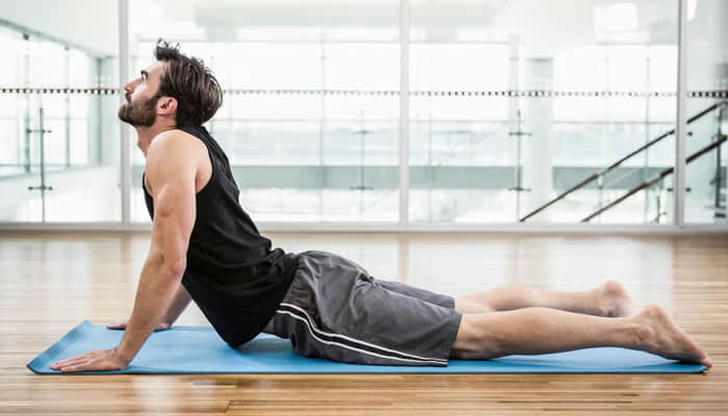
Back pain is a common complaint for many middle-aged adults. Whether it's due to years of sitting at a desk, lifting heavy objects, or just the natural wear and tear of aging, it can be frustrating and uncomfortable.
The good news is that yoga can be an effective and gentle way to relieve back pain. Yoga helps to strengthen the core, improve flexibility, and release tension in muscles that may be contributing to discomfort.
Let's explore how yoga can help you find relief from back pain and some simple poses you can start with.
Why Back Pain Increases in Middle Age

As we get older, our bodies naturally change. The discs in our spine may lose some of their cushioning, muscles can become less flexible, and the overall wear and tear of daily life can lead to aches and pains. For many people, back pain becomes a common issue due to a combination of factors such as poor posture, weak core muscles, or long periods of inactivity.
Hormonal changes, especially in women, can also impact muscle and joint health, making it even more important to stay active. The key to preventing and managing back pain is strengthening the muscles that support the spine and maintaining flexibility—both of which yoga can help with.
How Yoga Helps Relieve Back Pain
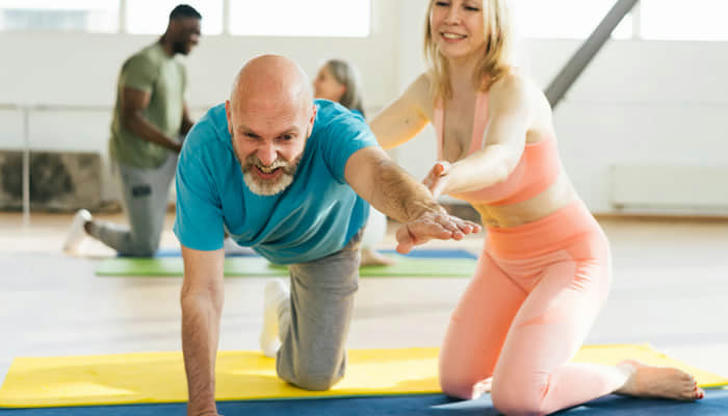
Yoga is a gentle form of exercise that focuses on both the body and the mind. When practiced regularly, it can help alleviate back pain by:
• Strengthening Core Muscles: A strong core is essential for supporting the spine. Many yoga poses engage the muscles of the abdomen, lower back, and hips, which can help relieve pressure on the spine.
• Improving Flexibility: Tight muscles, particularly in the hamstrings and lower back, can contribute to back pain. Yoga helps stretch and lengthen these muscles, reducing tension and discomfort.
• Promoting Better Posture: Poor posture is a major cause of back pain. By increasing body awareness and strengthening the muscles around the spine, yoga can help improve posture and reduce strain on the back.
• Reducing Stress: Back pain can sometimes be worsened by stress and tension. Yoga encourages relaxation and mindfulness, helping to calm the mind and reduce stress-related muscle tightness.
Simple Yoga Poses for Back Pain Relief
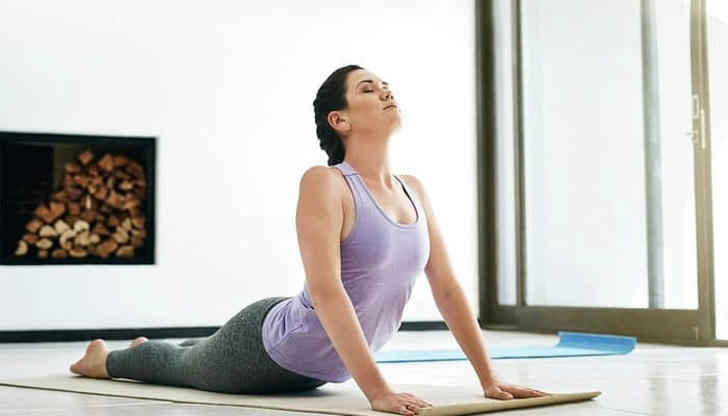
If you're new to yoga or haven't practiced in a while, don't worry! There are many gentle poses that are perfect for middle-aged adults experiencing back pain. Below are a few easy-to-follow yoga poses to get you started.
1. Child's Pose (Balasana)
Child's Pose is a restful pose that gently stretches the lower back and helps relieve tension.
How to do it:
Start on your hands and knees.
Spread your knees wide while keeping your big toes touching.
Sit back on your heels and stretch your arms forward, lowering your chest toward the ground.
Rest your forehead on the mat and hold for 30 seconds to 1 minute, breathing deeply.
Benefits:
Stretches the lower back and hips
Encourages relaxation and deep breathing
2. Cat-Cow Pose (Marjaryasana-Bitilasana)
This gentle flow between two poses helps stretch the spine and release tension in the back.
How to do it:
Start on your hands and knees in a tabletop position with your wrists directly under your shoulders and your knees under your hips.
Inhale and arch your back, lifting your head and tailbone toward the ceiling (this is the Cow Pose).
Exhale and round your back, tucking your chin to your chest and drawing your belly button toward your spine (this is the Cat Pose).
Repeat the movement for 5-10 rounds, moving with your breath.
Benefits:
Increases flexibility in the spine
Gently massages the back and helps relieve tension
3. Downward-Facing Dog (Adho Mukha Svanasana)
This popular yoga pose helps stretch the entire back, especially the lower back and hamstrings, which can contribute to back pain.
How to do it:
Start on your hands and knees in a tabletop position.
Tuck your toes under and lift your hips toward the ceiling, forming an inverted "V" shape with your body.
Keep your hands shoulder-width apart and feet hip-width apart. Try to keep your back straight by pressing your heels toward the ground.
Hold the pose for 30 seconds to 1 minute, then gently lower back down.
Benefits:
Stretches the lower back, hamstrings, and calves
Strengthens the arms and shoulders, supporting the upper back
4. Sphinx Pose (Salamba Bhujangasana)
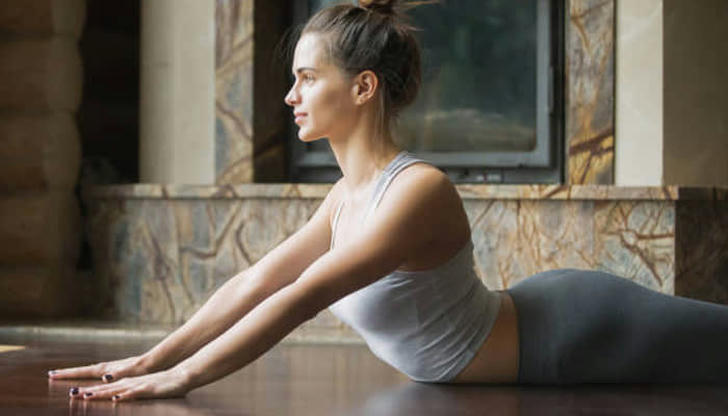
The Sphinx Pose is a gentle backbend that helps strengthen the lower back while stretching the front of the body.
How to do it:
Lie on your stomach with your legs extended straight behind you.
Place your elbows under your shoulders and lift your chest off the ground, pressing your forearms into the mat.
Keep your shoulders relaxed and gaze forward, holding the pose for 30 seconds to 1 minute.
Benefits:
Strengthens the lower back muscles
Gently stretches the spine and chest
5. Bridge Pose (Setu Bandhasana)
Bridge Pose is a great way to strengthen the lower back, glutes, and core muscles.
How to do it:
Lie on your back with your knees bent and feet hip-width apart.
Press your feet into the mat and lift your hips toward the ceiling.
Keep your arms by your sides and clasp your hands under your body if comfortable.
Hold the pose for 30 seconds to 1 minute, then gently lower back down.
Benefits:
Strengthens the lower back, glutes, and hamstrings
Stretches the front of the body, including the chest and hip flexors
Tips for Practicing Yoga Safely
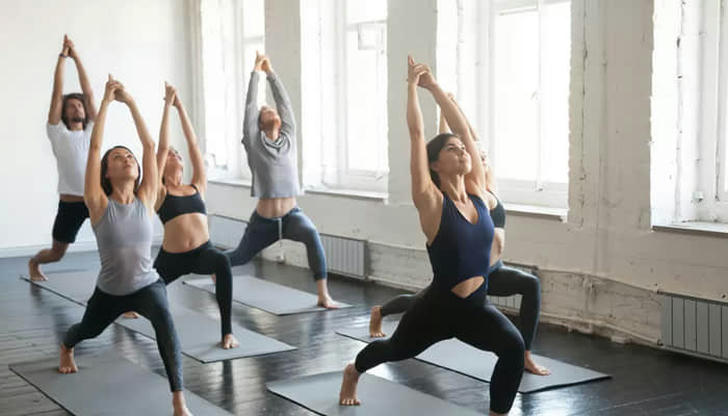
If you're new to yoga or experiencing back pain, it's important to practice safely. Here are a few tips to keep in mind:
Listen to your body: Yoga should never be painful. If a pose feels uncomfortable or aggravates your back pain, stop and modify the pose or try a different one.
Use props: Don't be afraid to use yoga blocks, blankets, or straps to help support your body in certain poses. Props can make poses more accessible and prevent strain.
Take it slow: Especially if you're just starting out, focus on gentle stretches and don't rush through the poses. The goal is to increase flexibility and strength over time, not push yourself too hard.
Practice regularly: Consistency is key. Even practicing yoga for 10-15 minutes a day can make a big difference over time.
Conclusion: A Holistic Approach to Back Pain Relief
Yoga is more than just a physical practice—it offers a holistic approach to wellness that can benefit both your body and mind. For people dealing with back pain, yoga provides a gentle yet effective way to stretch, strengthen, and relax the muscles that support the spine.
By incorporating yoga into your daily routine, you can find relief from back pain and improve your overall quality of life. Remember, it's not about being perfect—it's about feeling better, one pose at a time!

